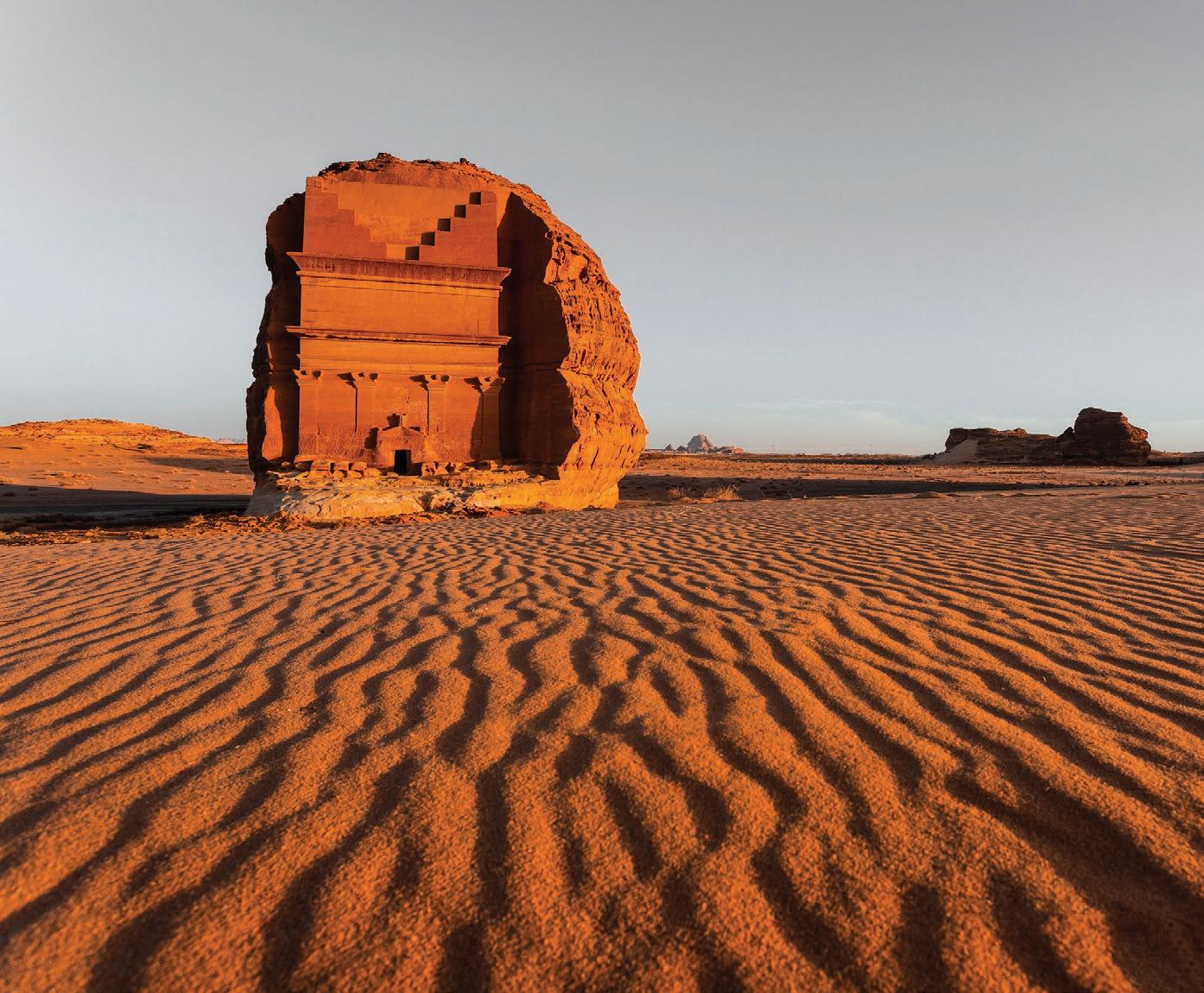
5 minute read
Introducing
Globe hopping 30 / Introducing...
Unspoilt AlUla
As Saudi Arabia begins to open up to mainstream tourists, AlUla will appeal to seasoned travellers looking for unique culture and ancient heritage, says Adam Coulter
Tomb of Lihyan son of kuza, hegra
best place for... Music: A concert at Maraya adventure: The Adventure Trail nature: Oasis Heritage Trail arts & culture: Madrasat AdDeera History: 4 heritage sites - Hegra, Dadan, Jabal Ikmah & AlUla Old Town sHopping & dining: AlUla Old Town & Al Jaddidah
eLephanT rock
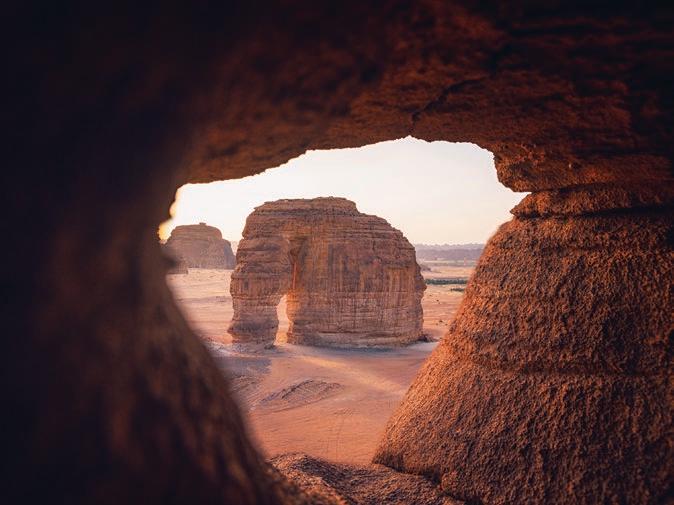
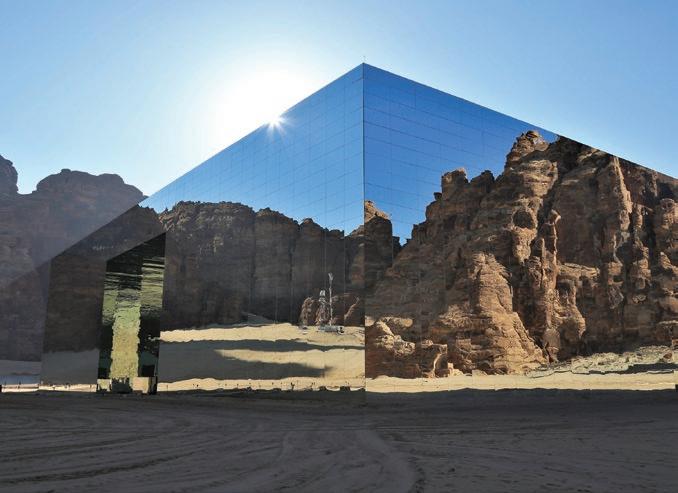
aLuLa oasis view TraiL maraya has hosTed musicians such as aLicia keys and seaL A s our plane begins its descent into AlUla International Airport, I look out of the window and see an endless desert that, at first glance, seems featureless and barren.
But then I spot a splash of green, the leaf of a palm; ochre and rose pink, the colour of the cliffs, or straight lines – the tell-tale signs of a human hand.
From the newly constructed airport –almost everything in Saudi seems ‘newlyconstructed’ – we head towards Hegra, which along with Mecca and Medina is arguably Saudi Arabia’s top cultural site.
I say “top” rather than most famous, because ask most people to name something cultural in Saudi, apart from those two religious sites, and they will likely struggle. But not for much longer.
I stand looking at the towering structures of Hegra, as tall as three-storey houses, marvelling at the intricate designs so undamaged after 500 years of enduring desert winds and heat.
When so much of the world has been charted, mapped, written about and photographed, there is something incredibly special about visiting a site that few people have ever heard of let alone visited – and that is a good hook on which to sell AlUla.
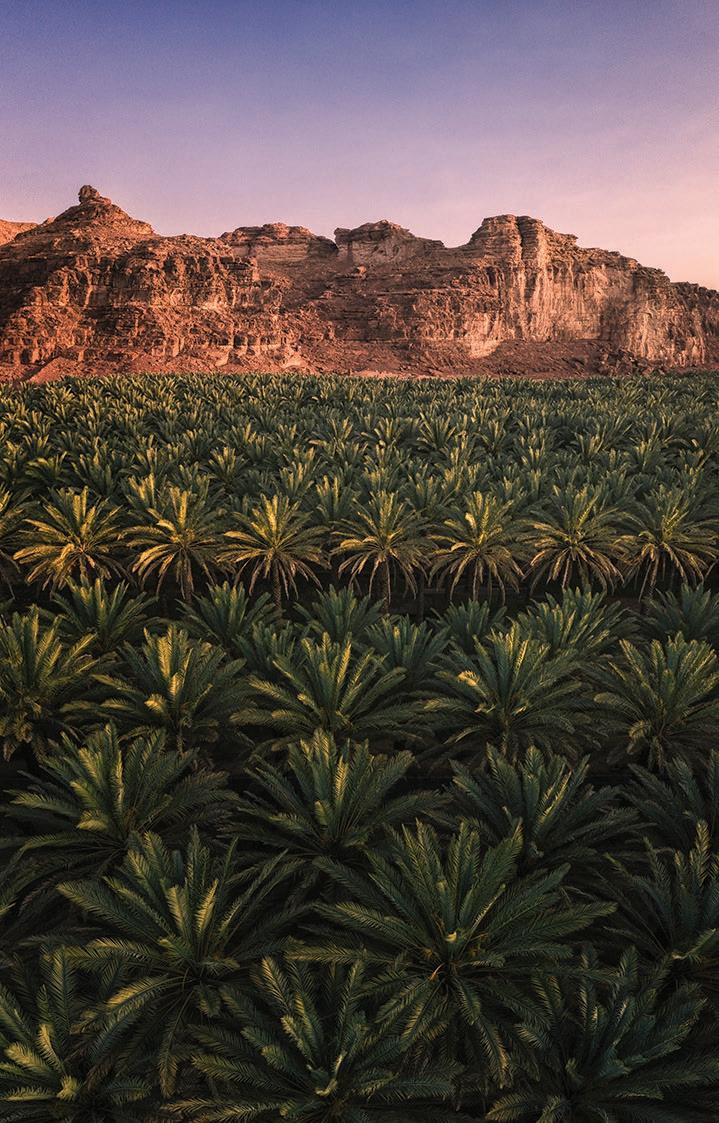
Open for tourism
If you visited World Travel Market last year you can’t fail to have noticed Saudi Arabia was the main sponsor – and as part of this tourism pus, AlUla was officially launched to the wider tourism sector.
All this activity forms part of Vision2030, the rulers’ acknowledgment that its oil is going to run out at some point and a desire to shift the country towards tourism.
To this end, if you travel to Saudi Arabia or send your clients you will visit a country that has been effectively closed to the world for the past 12 years or so, opening up.
deserT advenTure awaiTs
Globe hopping Introducing... / 31
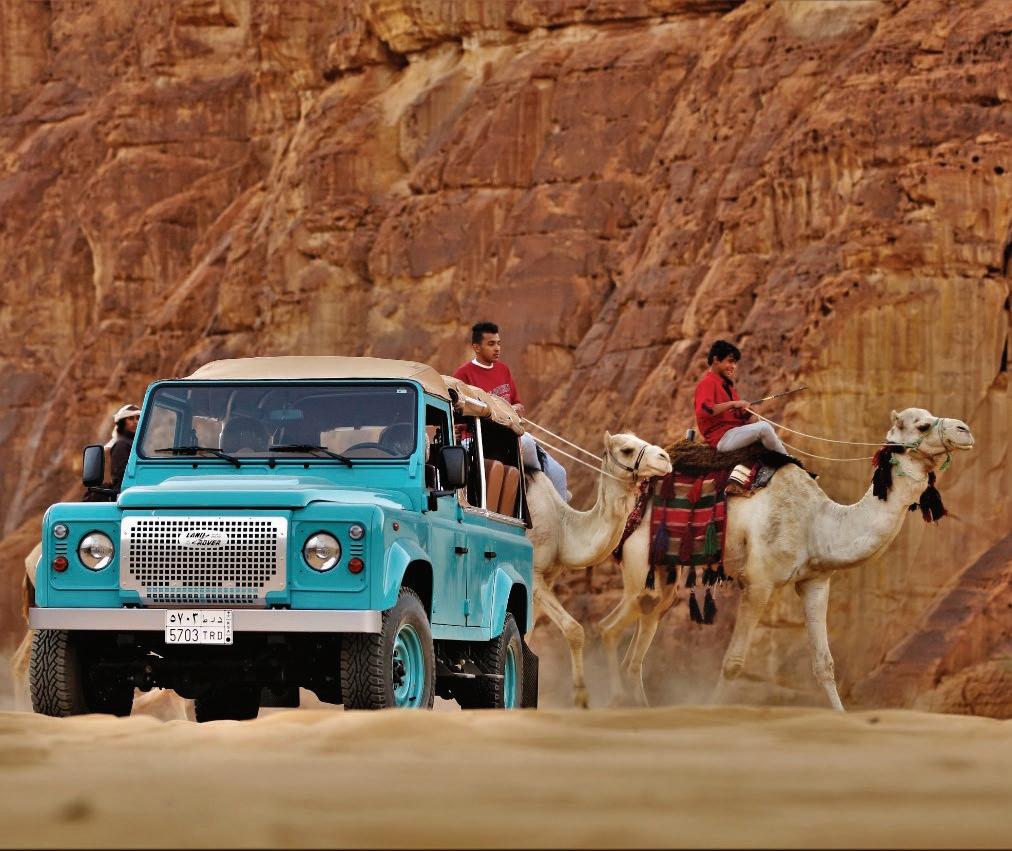
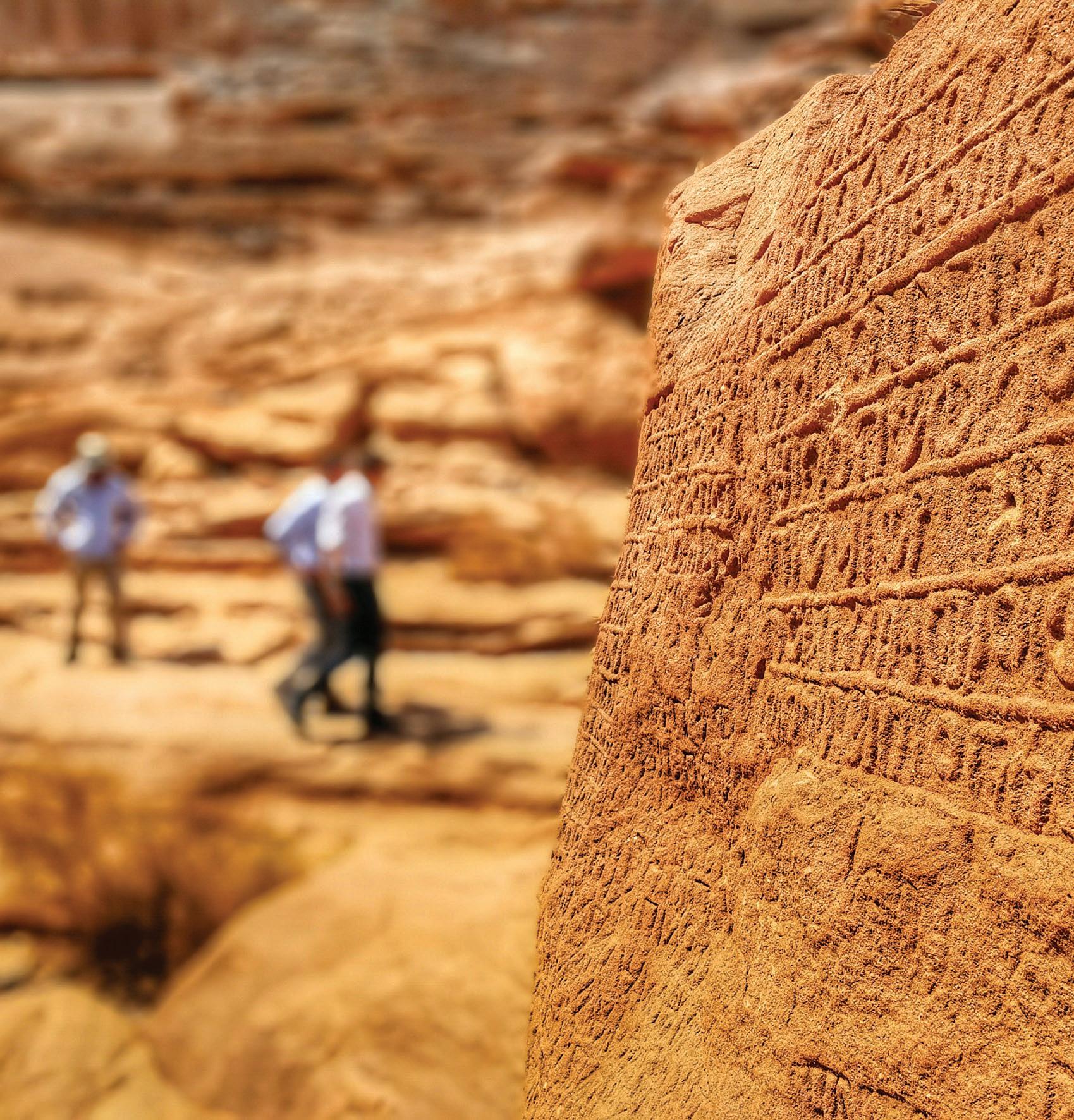
aLuLa has pLenTy of green spaces
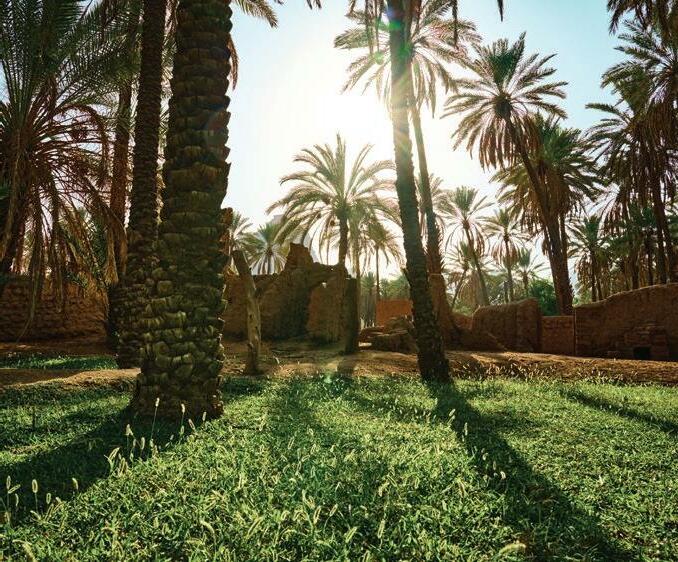
Hegra, Saudi’s first UNESCO World Heritage Site and one of four key heritage sites, is set to become one of the country’s most visited tourism attractions.
Located some 1,000 kilometres from Riyadh in the northwest of the kingdom and covering some 22,000 square kilometres (roughly the size of Wales), AlUla comprises an oasis valley, a vast desert studded with craggy sandstone mountains and four heritage sites: Dadan, home to more than a dozen Lion Tombs cut into the red-rock; Jabal Ikmah, a site famed for its thousands of pre-Arabic inscriptions; AlUla Old Town which contains remnants of original stone and mudbrick buildings dating back approximately to the 10th century, and Hegra, an ancient jewel in this crown.
There’s another unexpected gem – the Hijaz Railway station was built in 1900 and spanned 1,600km from Syria to Medina. Visitors can still see abandoned stations and rusted locomotives.
The 52-acre ancient region marked the southernmost point of the Nabataean kingdom, which stretched from here, across the Red Sea to Petra, which was constructed around 1,000 BC and marks the highpoint both culturally and architecturally for the Nabataeans, whose time and influence soon waned as the Roman Empire rose.
Hegra was built earlier, in the fourth to sixth centuries BC, and displays over 110 tombs. Inscriptions can be found that reveal
rock arT and inscripTions in JabaL ikmah
the origins of the Arabic language.
There are striking similarities to its sister city, Petra, with astonishingly well-preserved tombs carved out of the huge rocks that lie in the middle of this desert. Many were family tombs, built by rich merchants with an eye on a comfortable afterlife.
Modern marvels
Fast forward a few thousand years and stray a few kilometres from Hegra and you’ll find another equally astonishing man-made structure, completed three years ago – Maraya, a concert hall and the largest mirrored building in the world.
Maraya, which means ‘mirror’, has hosted the likes of Alicia Keys, Seal and Bocelli.
It’s a truly dazzling site, both literally and metaphorically; I have never seen anything like it (we are told that the architects opted to cover it in mirrors as they felt they could not improve on the landscape which surrounded them, so decided to reflect it).
Luxury hotel operators are moving in fast – Habitas opened its breathtakingly beautiful AlUla property last year, a sustainable gem in middle of the desert valley, surrounded by towering cliffs; a Banyan Tree will open a 82-villa resort in the spring and Aman will be opening three new properties over the next three years.
Perhaps the most extraordinary new development will be Sharaan Nature Reserve, which, with a nod to Hegra, will be cut into a sandstone hill.
A tricky but a rewarding sell
There’s no getting away from the fact that Saudi is a dry country (both in terms of desert and no alcohol). However, the country, and AlUla in particular, is quickly opening up to tourism and if you have adventurous or history-loving clients that are looking for something unique and ‘offthe-beaten-track’ or, if you feel that tourism is a force for good (as I do), then now is the time to sell Saudi and discover AlUla. •
Book it with... Windows on the Wild
Windows on the Wild offers a five-night Discover AlUla tour from £2880pp. The tour visits all four heritage sites, includes return flights, transfers, five nights bed and breakfast, sightseeing tours with English speaking guides, plus four dinners. windowsonthewild.com










